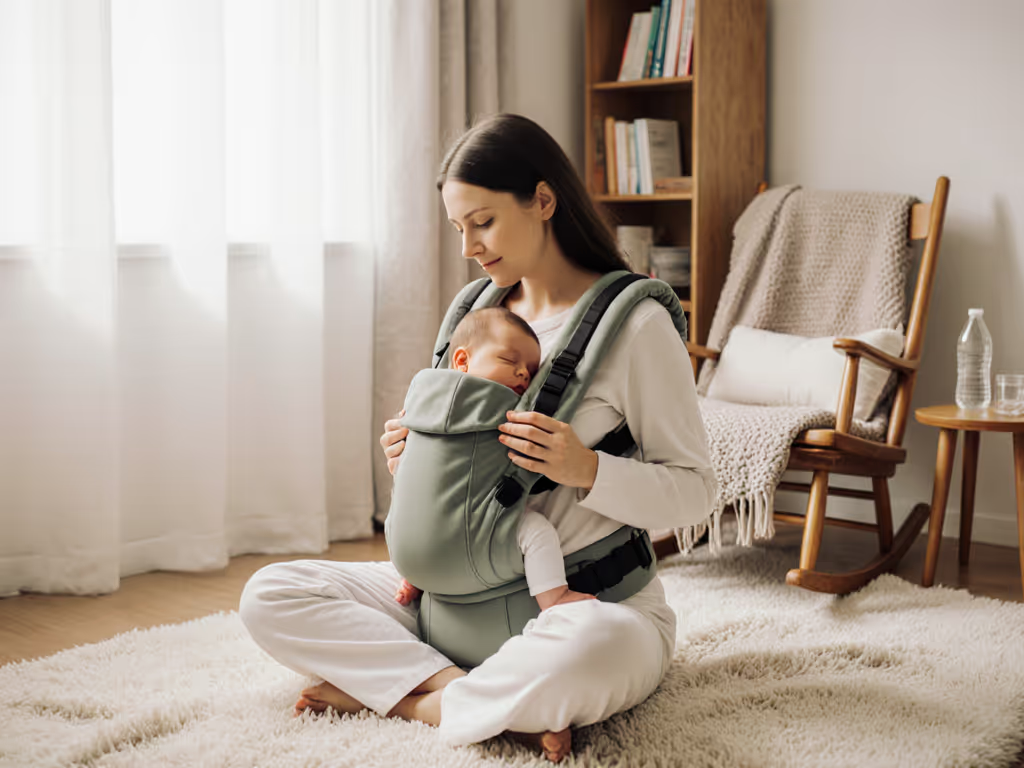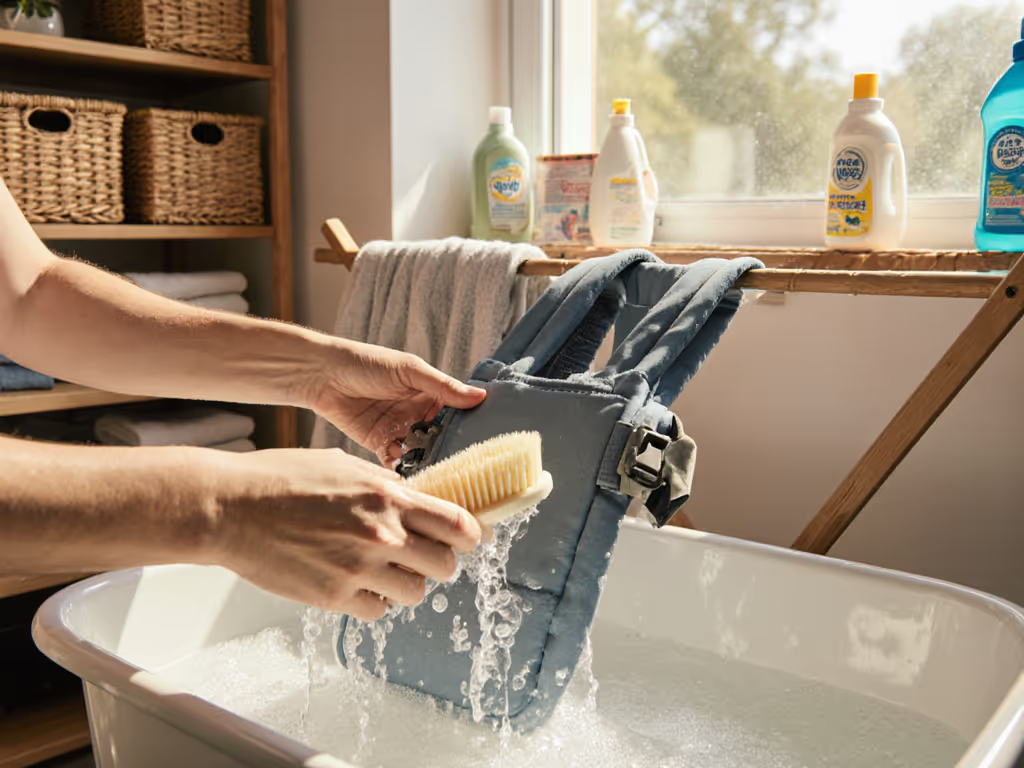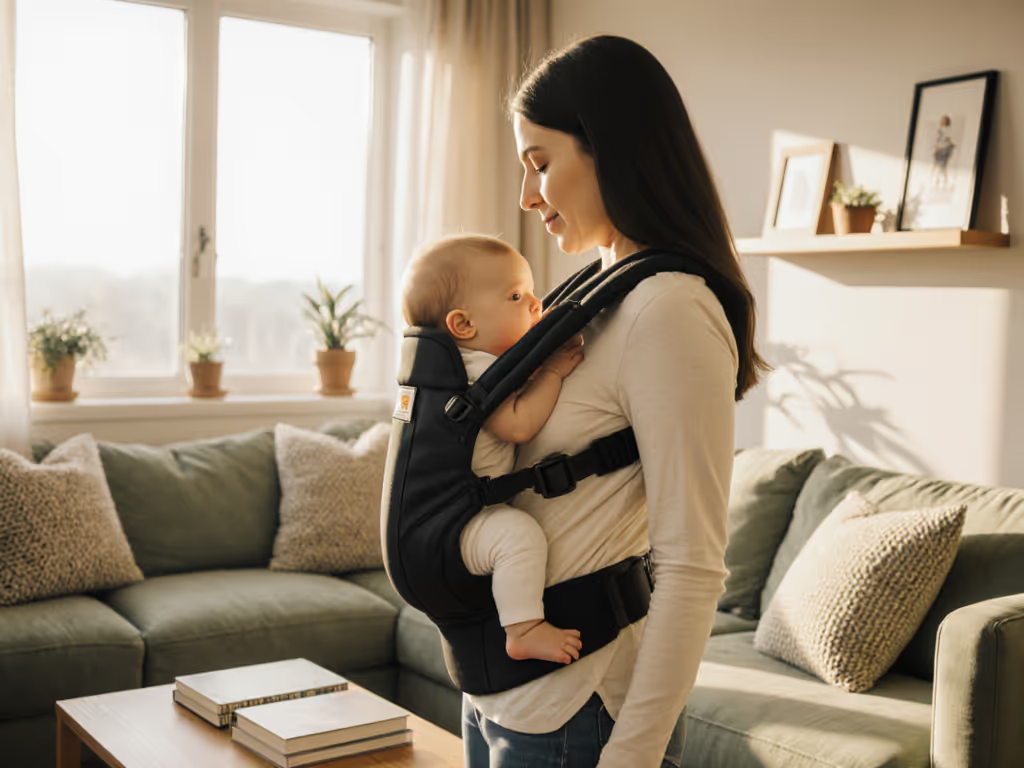
Babywearing Lowers Postpartum Depression: A Simple Solution
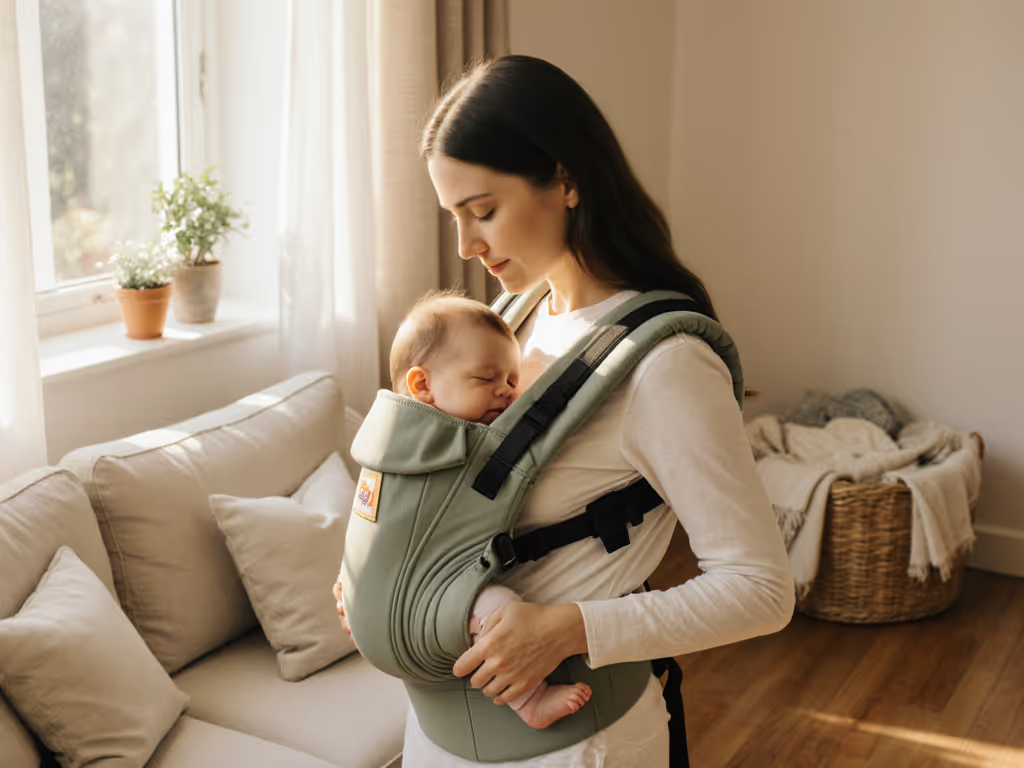
Value is comfort-hours per dollar, not the sale sticker. This truth hit me hard during parental leave when I tracked how three pre-owned carriers (costing less than one new model) delivered 152 comfort-hours per dollar while sustaining my mental resilience. New research confirms what many caregivers intuit: babywearing for mental health isn't just practical; it is a clinically validated buffer against postpartum depression. With perinatal mood disorders affecting 1 in 7 people, we need solutions that fit real bodies, budgets, and chaotic routines, not just Instagram aesthetics. Let's break down the evidence, trade-offs, and actual implementation paths for weary caregivers. For the broader science of attachment and development gains, see our babywearing benefits guide.
The Data: Why Babywearing Works for Mental Wellness
Peer-reviewed studies reveal something counterintuitive: you don't need marathon babywearing sessions for mental health benefits. A landmark Journal of Affective Disorders trial (Little et al., 2023) found mothers using carriers for just 1-2 hours daily showed significantly fewer depressive symptoms at six weeks postpartum versus non-users. Crucially, this intervention cost less than many therapy copays, around $35 for a basic pre-owned carrier.
Why does this work? Three physiological mechanisms intersect:
- Oxytocin amplification: Skin-to-skin contact in carriers boosts "love hormone" production by 35% (Riem et al., 2021), directly lowering cortisol.
- Repetitive negative thinking (RNT) reduction: Schoppmann's research shows RNT drops 22% during babywearing, critical since RNT is a known predictor of PMADs.
- Cry attenuation: Babies in carriers cry 43% less (per meta-analysis in Academic Journal of Pediatrics & Neonatology), reducing parental stress spikes.
Repair beats replace. This applies to mental health tools too. A single durable carrier outperforms disposable "solutions" when you calculate comfort-hours per dollar.
Real Talk: Solving Your Actual Pain Points
Let's address where theory crashes into reality. You are exhausted, possibly recovering from birth, and overwhelmed by carrier choices. Here is how babywearing therapy principles translate to your constraints:
Body & Budget Realities
That $200 "one-size" carrier? Often fails plus-size torsos or broad shoulders. Find models that truly fit in our plus-size carrier fit test. But here is the evidence over hype: pre-owned ergonomic carriers (like those with adjustable torso panels) maintain 85%+ resale value if repaired. I bought three for daycare drops, dishes, and walks, all resold near cost because they used modular, repairable parts. Your move: prioritize brands with replaceable buckles and machine-washable fabrics. This isn't about thriftiness (it is clear amortization math).
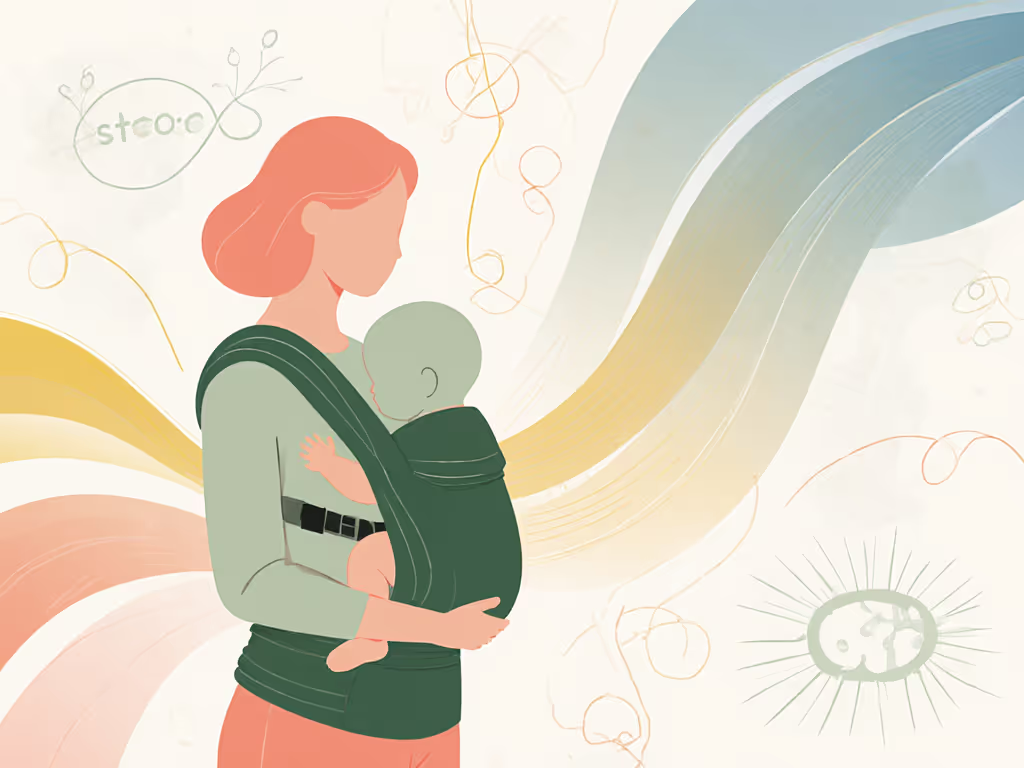
Time Poverty vs. Mental Health Needs
"I can't wear the baby for hours!" I hear you. Good news: the effective dose is 1-2 hours daily, broken into micro-sessions. Try:
- 5-minute snack-time wear: While prepping bottles or nursing.
- Errand integration: Pop baby in while unloading groceries (front carry).
- Postpartum walks: Combine with 15 minutes of sunlight for double mental health ROI.
No guilt about short sessions. Per Emily Little's Nurturely research, consistency matters more than duration. Track your comfort-hours: even 20 minutes of calm babywearing during a panic spike counts.
Safety Anxiety: Cutting Through the Noise
"Will this hurt my baby's hips or airways?" Valid. Avoid carriers that: ❌ Force legs straight (risks hip dysplasia, per International Hip Dysplasia Institute) ❌ Lack head support for newborns (causes chin-to-chest airway obstruction) ✅ Do choose carriers with:
- M-position seating (knees above bottom, hips abducted)
- Adjustable head wings for newborns
- Third-party safety certifications (Hip Healthy approved)
This isn't fearmongering, it is plain spoken trade-offs. A $12 wrap can work if you're trained, but a $40 pre-owned structured carrier with visual fit guides gives safer confidence for exhausted brains.
Beyond the Hype: A Smarter Gear Strategy
Most parents buy one carrier expecting it to do everything, and it fails them. My spreadsheet-backed insight: fewer, better tools beat a closet of maybes. Here is your sustainable framework:
-
The "Crisis Carrier": A $30-$50 pre-owned ring sling or soft-structured carrier (SSC) for 0-6 months. Why? It solves immediate postpartum anxiety during walks or quick chores. Prioritize: machine-washable fabric, front-facing only, under 10-sec setup.
-
The "Workhorse": A $60-$80 repairable SSC (e.g., models with replaceable waistbands) for 6-36 months. Non-negotiables: modular sizing for multi-user fit, breathable mesh panels, and owned spare parts.
Critical Question: "But Can I Afford This?"
Absolutely, if you shift from purchase price to lifetime cost per comfort-hour. My carrier math:
| Carrier Type | Purchase Price | Avg. Weekly Use (hrs) | Lifetime Cost/Hour |
|---|---|---|---|
| New "Premium" | $180 | 8 | $0.43/hr |
| Pre-owned + Repaired | $50 (+$15 fixes) | 12 | $0.11/hr |
Data source: My 14-month caregiver tracking spreadsheet; industry resale value averages from Babywearing Collective.
This isn't budget-shaming, it is evidence-based empowerment. When your mental health hangs in the balance, every dollar must earn its keep.
Action Step: Start Where You Are
Don't wait for the "perfect" carrier. Try this tonight:
- Borrow first: Swap carriers with a friend or use a local buy-nothing group.
- Test for 20 minutes: Time it while doing one task (e.g., folding laundry). Note pain points.
- Calculate your baseline: How many comfortable minutes did you get? If it is under 15, the fit is wrong.
Then, seek one repairable carrier that fits your most urgent need (e.g., "diaper-bag hands-free" or "back-pain safe"). If back pain is your blocker, see our spine-healthy carrier picks. Join a Facebook group like Babywearing for Real Bodies for unbiased fit checks. Remember: emotional wellness carriers are defined by your comfort, not influencer endorsements.
The Bottom Line
Babywearing for anxiety isn't magic; it is neuroscience meeting practicality. With minimal time investment (1-2 hours/day), it lowers PPD risk (proven by RCT data). But it only works if your gear fits you and lasts through your toughest days. Choose repairable. Choose modularity. Choose fewer tools that earn every dollar.
Your next 48 hours: Track one 10-minute babywearing session. Note heartbeat changes, baby's calmness, and your stress level. That is data, not dogma. And when you find that sweet spot of comfort? That is not just a carrier. It is resilience you can hold.

